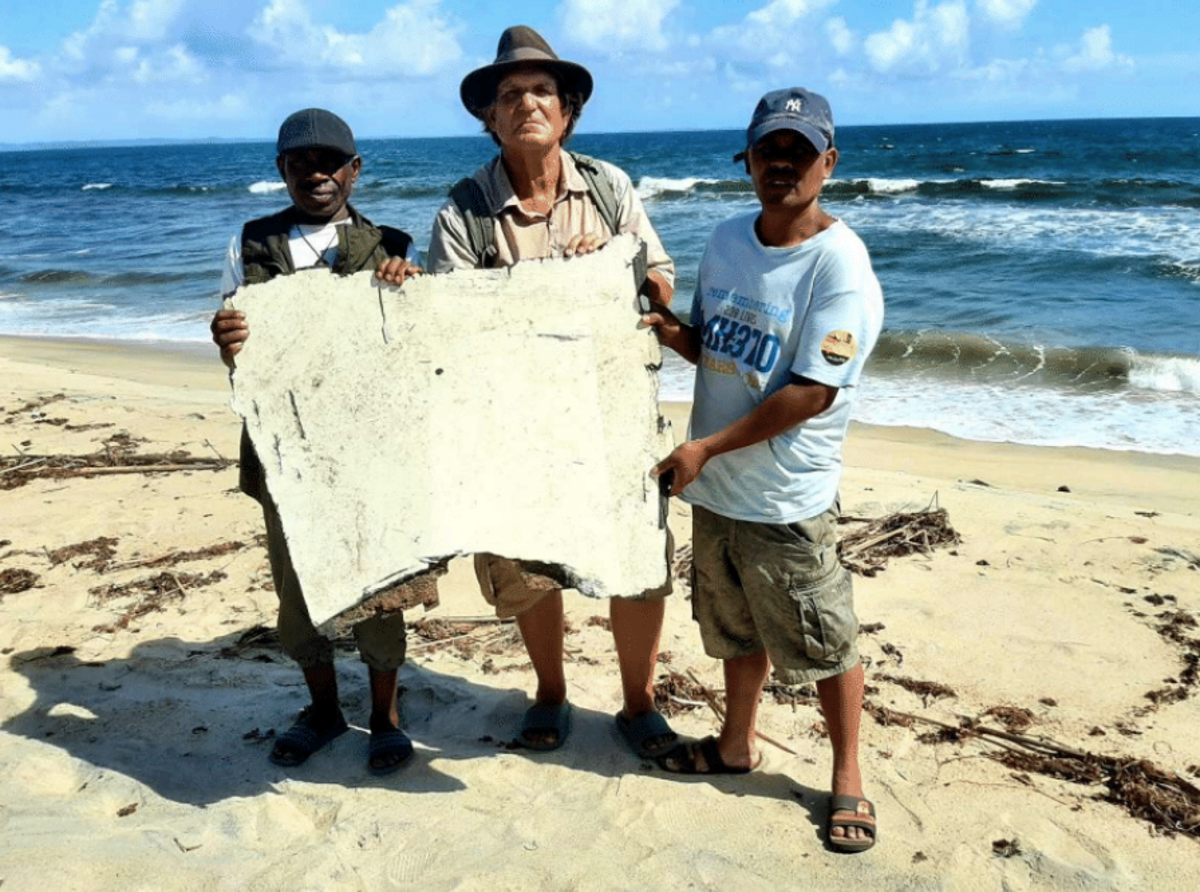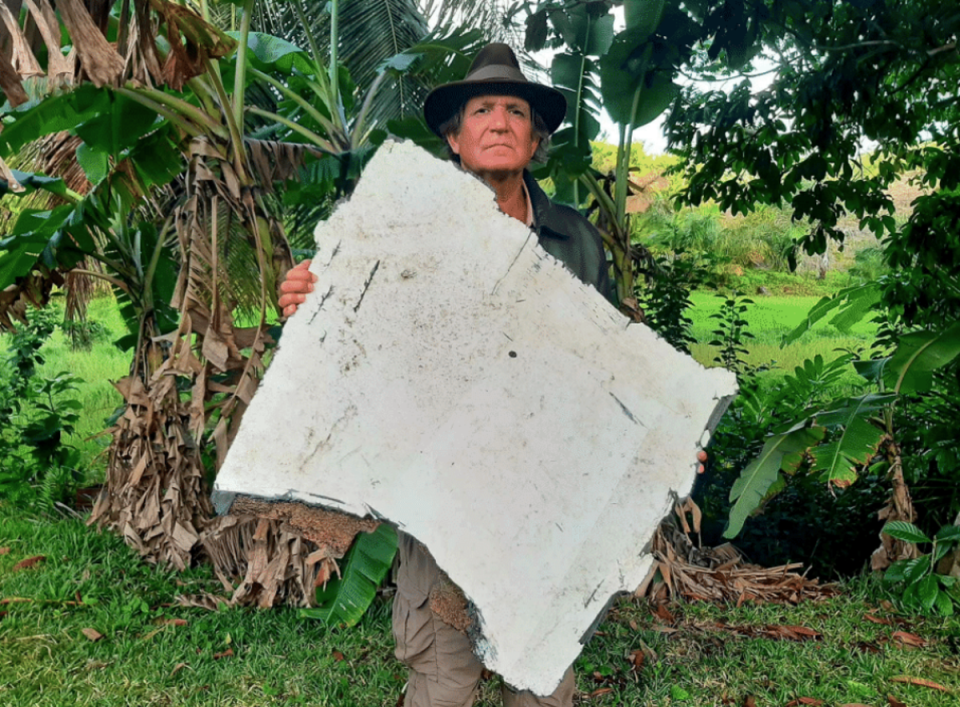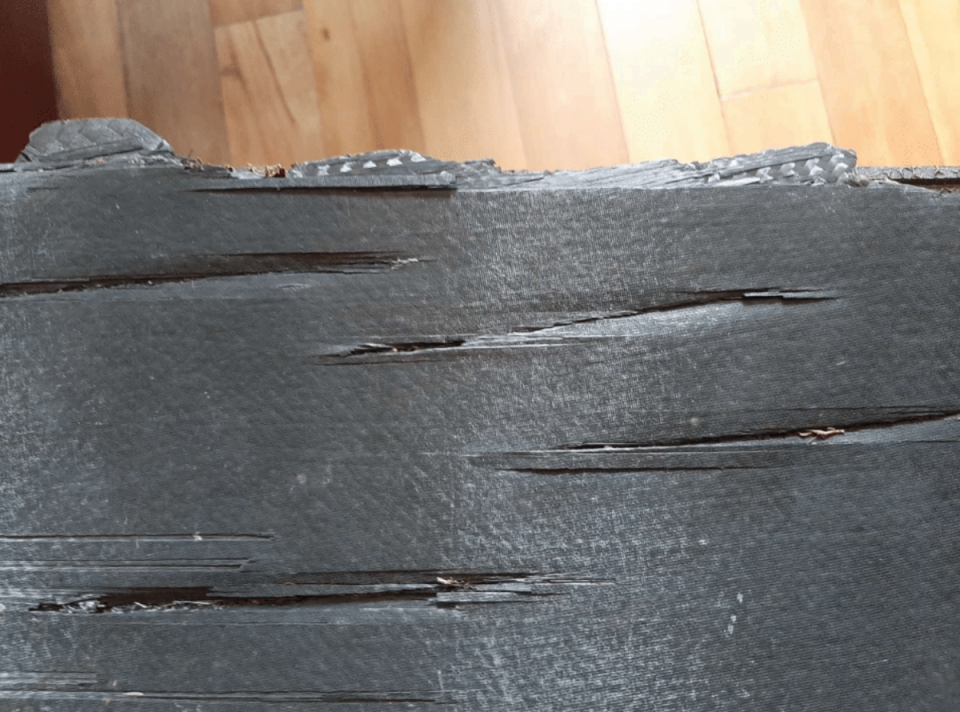Debris find offers new clues to MH370 mystery

A newly discovered piece of debris from lost flight MH370 suggests that the landing gear was down when the aircraft hit the ocean, according to experts – adding weight to the theory that the plane was crashed deliberately.
The Boeing 777 component, known as a trunnion door, was found in the possession of a Madagascan fisherman 25 days ago. It is the first piece of material evidence to suggest that one of the pilots on board the Malaysian Airlines flight intended to destroy the aircraft along with its 239 passengers and crew.
A fresh report published by Blaine Gibson, a self-described American MH370 wreckage hunter, and Richard Godfrey, a British engineer, says: “The level of damage with fractures on all sides and the extreme force of the penetration right through the debris item lead to the conclusion that the end of the flight was in a high-speed dive designed to ensure the aircraft broke up into as many pieces as possible. The crash of MH370 was anything but a soft landing on the ocean.”
The door was discovered at the home of a fisherman in Madagascar, who found the barnacle-crusted part washed up on the shore of the Antsiraka peninsula in Madagascar in March 2017 in the wake of tropical storm Fernando.

The fisherman, whose name is Tataly, acted as guardian to the debris for more than five years, unaware of its significance. He kept it in his large yard, furnished with an array of seaborne paraphernalia he collected on the shoreline, and his wife used it as a washing board. He said he had had no idea what it was.
Though a total of four pieces of debris thought to belong to the missing airliner have been found on the same beach, and 19 pieces in total across Madagascar, the door is the first to offer significant insight into the tragic demise of the Boeing 777 on 8 March 2014.
“We know from the analysis of the right outboard flap found on Kojani Island, Tanzania, that this was not an attempted ditching, where the flaps would normally be extended, because the expert analysis showed that the flaps were not extended,” the report reads.
“The realistic possibility that the landing gear was lowered shows both an active pilot and an attempt to ensure the plane sank as fast as possible after impact,” it continues. “The combination of the high-speed impact designed to break up the aircraft and the extended landing gear designed to sink the aircraft as fast as possible both show a clear intent to hide the evidence of the crash.”
The evidence that has inspired the theory put forward by Mr Godfrey and Mr Gibson consists of four quasi-parallel gashes on the door, which they believe were caused by one of the plane’s two engines disintegrating on impact.

The engines on a Boeing 777 are made up of a fan at the front, a compressor, and a turbine at the rear. The report suggests that the aircraft’s compressor blades would have been compatible with the four-inch slashes seen on the door.
“Whatever the cause of the slicing damage, the fact that the damage was from the interior side to the exterior side of the debris item leads to the conclusion that the landing gear was highly likely extended on impact, which in turn supports the conclusion that there was an active pilot until the end of the flight,” the report reads.
It later concludes that “the recovered 370 floating debris speaks to how the plane crashed, and the oceanographic drift analysis speaks to where. Neither can tell us who was flying the aircraft or why.”
Speaking to The Times, Mr Godfrey said the landing gear door was “the first item of physical evidence that indicates a possible criminal intent behind the demise of MH370”.
Such speculation harks back to an earlier discovery in the MH370 saga. Malaysian police found that its captain, 53-year-old Zaharie Ahmad Shah, had used his home PC flight simulator to mock up a Boeing 777 flight south across the Indian Ocean less than a month before the plane he was flying vanished in strikingly similar circumstances.
The finding regarding the pilot, who is suggested to have suffered from clinical depression, was withheld by Malaysian authorities from a lengthy public report on the investigation.


